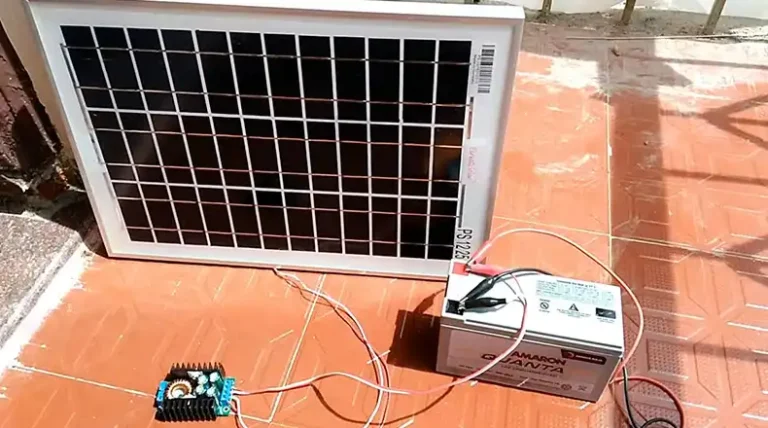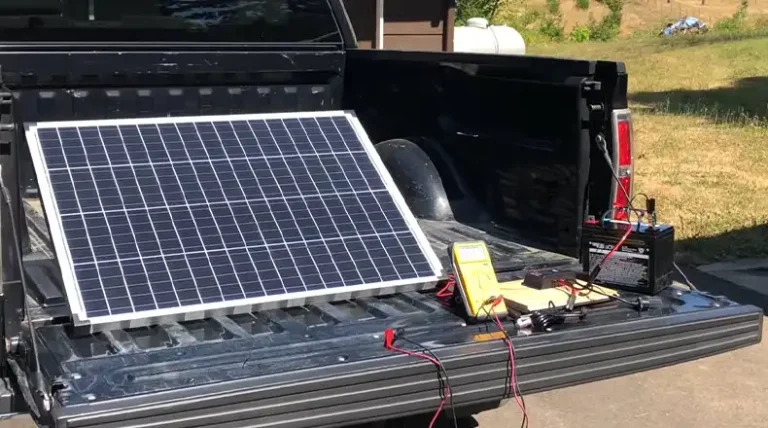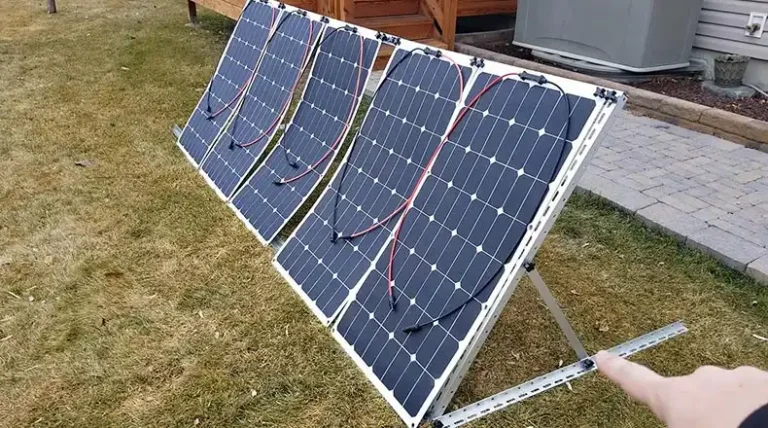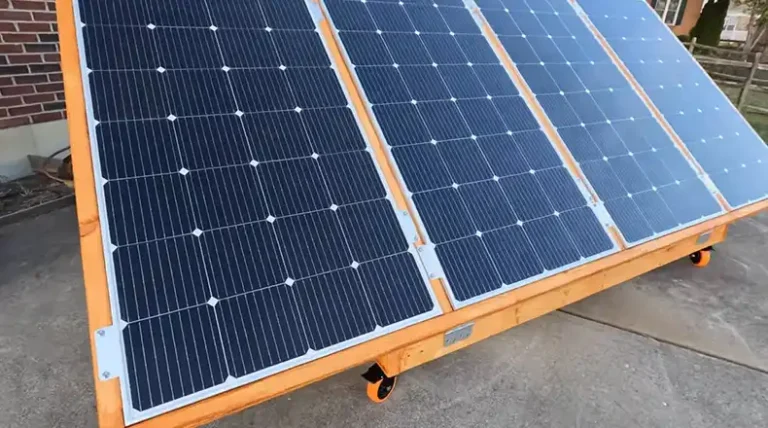How Many Solar Panels Can You Put On A Pole Mount? What to Consider to Determine
One popular solar mounting option is a pole mount, which elevates solar panels above the roof. But how many solar panels can you actually fit onto a pole mount?
The number of solar panels that will fit on a pole mount depends on several factors, especially the size and wattage of the panels and the weight capacity of the pole mount system. Generally, pole mounts can accommodate 10-25 panels depending on the panel and mount specifications.
To get a more precise answer for your property, it’s important to calculate the total solar power capacity needed, take stock of your usable roof space, and understand the specifications of the panels and mounting system. Reading on to learn all the key factors in determining pole mount solar panel capacity for residential settings.
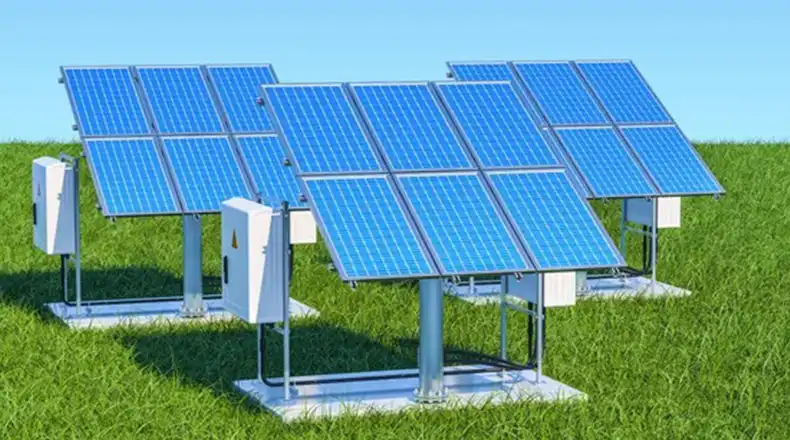
How Pole Mounts Work for Solar Panels
Before getting into panel capacity, it’s helpful to understand what exactly a solar pole mount is. A pole mount is a metal pole, usually made from galvanized steel or aluminum, that elevates solar panels above the roof. The pole is securely anchored to the roof, then solar mounting rails and panel connections are attached to the top of the pole. This lifts the solar array above the roof surface.
Pole mounting is popular for several reasons:
- Elevates panels above roof obstacles like vents, chimneys, and skylights that may shade panels mounted directly on the roof.
- Raises panels higher to capture more sunlight, especially in northern latitudes.
- Keeps panels cooler by allowing more airflow underneath.
- Makes panels more visible for maximum solar production.
- Allows installers to orient panels for optimal sun exposure.
- Reduces roof penetrations needed for attachments.
There are two main types of solar pole mounts:
- Single pole – One taller pole placed centrally under a grouping of solar panels.
- Multiple poles – Shorter poles spaced out under panels, providing more anchoring points.
The poles themselves are made of corrosion-resistant materials and engineered to withstand winds up to 140 mph. Installation involves securely bolting the poles to rafters within the roof structure.
Factors That Determine Pole Mount Panel Capacity
Now that we’ve covered pole mount basics, let’s dig into the key factors that govern how many solar panels you can fit onto a residential pole mounting system.
Solar Panel Dimensions and Spacing
The size of your actual solar panels is the primary factor determining pole mount capacity. Standard dimensions for a 60-cell residential solar panel are roughly:
- Width – 39 to 41 inches
- Height – 65 to 67 inches
- Depth – 1.2 to 2 inches
But panel sizes can vary, with larger 72-cell panels reaching up to 67 inches wide. Measure your own panels to understand their footprint.
Solar panels cannot touch, otherwise their frames will shade each other. Spacing between panels is needed for:
- Mounting hardware and connections
- Conduit and wiring routes
- Airflow and cooling
- Accounting for thermal expansion
- Access for cleaning and maintenance
Typical spacing between panels ranges from 2 to 12 inches. As a rule of thumb, 4 inches of spacing around all sides of the panel allows for safe operation and optimal production.
With the panel size and spacing determined, you can calculate how many panels will physically fit onto the pole mount rails in each row and the overall array dimensions.
Pole Strength and Diameter
The strength and diameter of the metal pole itself is crucial. The pole must be engineered to support the total wind and snow load weight of the panels plus the mounting system. Pole mount capacities range from 6 to 30 panels, depending on:
- Pole height above the roof
- Pole material and thickness
- Number of anchor points into the roof
- Diameter of the pole cross-section
A taller pole can hold more panels but also catches more wind. A 6-inch diameter aluminum pole may support up to 20 panels, while a steel pole may only support 6 to 8 panels at that diameter. A wider pole diameter provides more strength. Bolting the base through multiple rafters better distributes the shear load.
Consult pole mount manufacturer specs to determine weight limits for your area’s wind and snow loads. Exceeding the rated capacity can cause the pole to bend, twist, or snap.
Roof Size and Layout
The physical footprint and layout of your roof will dictate the maximum pole mount solar array size. Consider:
- Total square footage of unshaded roof space
- Roof edges, ridges, valleys, and overlaps
- Location of vents, chimneys, skylights, and other obstructions
- Optimal panel orientation for sun exposure
Pole mounts work best on simple gable roofs with large expanses of south-facing space. Limiting factors like dormers, hips, and valleys can reduce useable space. Plans must also account for roof access paths, safety perimeters, and fire code setback rules.
Finally, the home’s electrical system capacity must be factored in when planning panel quantities and positioning on the roof.
Mounting System Design
The rails, clamps, and hardware that connect the panels to the pole also impact solar capacity. The mounting system must be engineered to handle the structural, wind, and environmental stresses involved.
Factors such as the mounting rail span lengths, number of connection points, and types of clamps affect strength. Longer spans between fewer attachment points may limit capacity compared to more attachments across shorter distances.
Solar rail dimensions also play a role, with wider rails potentially accommodating more panels than narrow versions, depending on clamp configurations.
Like the pole itself, the mounting rails have rated weight limits set by the manufacturer that cannot be exceeded. Mounting system design choices directly influence how many panels can be safely and reliably installed.
Typical Pole Mount Solar Panel Capacities
Taking all these factors into account, a typical 4-inch diameter residential pole mount can hold between 10 to 25 panels, with the higher end requiring a stout 8-inch pole. Here are some example capacity scenarios:
- 10 to 12 panels – A 6 to 8-foot pole with 6-inch diameter supports up to 360-pound panels.
- 15 to 20 panels – An 8 to 12-foot pole with an 8-inch diameter supports up to 600 pounds.
- 20 to 25 panels – For up to 750 pounds, a heavy-duty 8 to 10-inch diameter steel pole is required.
In real-world installations, the most common pole mount capacities seen are:
- 10 to 15 panels – Covers typical residential needs with a pole mount maximizing smaller roof spaces.
- 15 to 20 panels – Fits larger southern-facing roof planes and accommodates expanded systems.
- 20 to 25 panels – Requires a large, simple roof area and generous pole mount engineering.
Beyond 25 panels, most systems transition to standard roof mounts, a second pole array, or a ground mount system to supplement the roof.
Of course, actual panel numbers depend on the wattage and output of the specific panels used. For example, 15 panels could indicate anywhere from 3,000 to 9,000 watts depending on the panel power ratings.
Here is the number of required solar panels based on the solar panel size and the pole mount capacity:
| Top of the PoleSelection Guide | Number of Solar Panels | |||
| Solar Panel Size(width x length) | 1X | 2X | 3X | 4X |
| W(19-23) x L(35-44) | TPM1-A | TPM2-A | TPM3-A | TPM4-A |
| W(20-26) x L(39-50) | TPM1-B | TPM2-B | TPM3-B | TPM4-B |
| W(22-27) x L(56-63) | TPM1-C | TPM2-C | TPM3-C | TPM4-C |
| W(31-33) x L(60-67) | TPM1-D | TPM2-D | TPM3-D | TPM4-D |
| W(38-40) x L(51-53) | TPM1-E | TPM2-E | TPM3-E | TPM4-E |
| W(38-42) x L(58-61) | TPM1-F | TPM2-F | TPM3-F | TPM4-F |
| W(37-42) x L(61-67) | TPM1-G | TPM2-G | TPM3-G | TPM4-G |
Tips to Optimize Pole Mount Layout and Spacing
Within the max pole capacity, some key considerations can help optimize the solar array layout and spacing:
- Center panels over anchor points along the roof rafters to distribute weight.
- Position panels to avoid shading from poles, rails, and connections.
- Allow access paths through the array to each pole and panel.
- Maintain code-compliant access paths to other roof areas.
- Leave accessibility and maneuvering space for first responders.
- Allow a perimeter buffer from roof edges as fall protection.
Proper orientation and tilt of the panels relative to the sun is also critical for peak production. Using higher poles and longer rail spans allows greater flexibility in positioning.
Finally, take advantage of micro-inverter or power optimizer technology to avoid shading losses within the array. Smart module-level electronics overcome small amounts of shading far better than string inverters.
Summing Up
Pole mounts provide an effective way to elevate solar panels above obstructions and squeeze more productivity from your roof. While pole capacity varies based on equipment and conditions, 10 to 25 panels are typical for residential installations. Careful planning and rail/pole engineering enable proper spacing of panels for safety, solar access, and serviceability. Working with solar experts ensures your system takes full advantage of the pole mount’s potential to capture the sun. Thanks for reading! For help assessing your home’s solar suitability or pole mount options, consult your local solar energy company.
Related Popular Questions
How Far Apart Do Solar Panels Need To Be On A Pole Mount?
Solar panels on a pole mount should have a gap of 2 to 12 inches between adjacent edges and frames. A distance of 4 inches around all sides is optimal for airflow, cooling, and unshaded solar exposure. More spacing may be required to route conduit or provide access paths between panels.
Are Pole Mounts Better Than Roof Mounts?
Pole mounts have pros and cons compared to roof mounts. Benefits include lifting panels above obstructions, increasing sun exposure, keeping panels cooler, and reducing roof penetrations. Drawbacks can be higher wind loads and costs. An installer can advise which approach is better suited to your specific home and goals.
What Is The Maximum Weight For A Pole Mount?
Maximum pole mount weight capacities range from 200 to 750+ pounds depending on the pole height, diameter, wall thickness, and number of attachment points. A 6-inch diameter residential aluminum pole may be rated for 300 pounds while an 8-inch heavy-duty steel pole can support over 700 pounds. Always follow manufacturer weight limits.
How Tall Should Pole Mounts Be?
The optimal pole mount height is based on the roof slope and obstructions. Typical pole heights are 6 to 12 feet. Enough elevation is needed to raise panels above vents, chimneys, etc. But taller poles also catch more wind. Height is customized for each home’s conditions to maximize sunlight access while meeting structural requirements.

![[Solved] Why Is My Solar Panel Voltage Low](https://www.itekenergy.com/wp-content/uploads/2024/03/Why-Is-My-Solar-Panel-Voltage-Low-768x428.webp)
